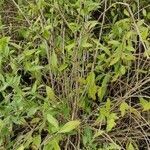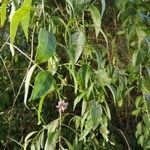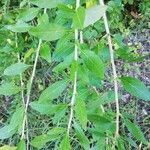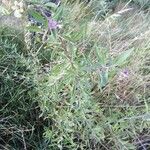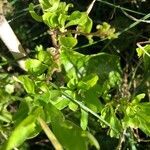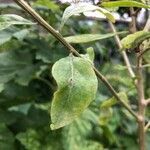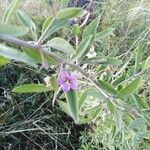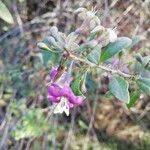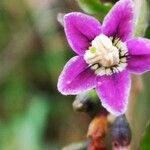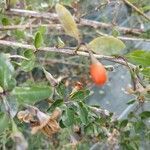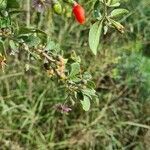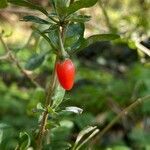Shrub to 2.5 m with weak, arching branches; lateral branches often few, reduced to short, leafless spines. Leaves ovate to elliptic, scarcely fleshy when fresh, green; clustered leaves to 25 mm long, single alternate leaves to 55 mm long, persistent, usually acute. Pedicels 6–15 mm long. Calyx campanulate to broadly ellipsoid, 3–4 mm long, sometimes 2–lipped. Corolla 10–12 mm long, pale mauve towards limb, the lobes deep mauve above; limb strongly reflexed. Stamens 5, exserted for 3–8 mm. Pistil 8–11.5 mm long. Fruiting calyx split deeply once or twice. Berry ellipsoid, 3–4 mm diam., red, with c. 20 seeds. Seeds 2 mm long, 1 mm wide, yellowish.
Glabrous shrubs with long, weak, generally sparsely thorny, arched or climbing branches, 1–6 m; lvs short-petiolate, entire, elliptic to lanceolate, ovate, or oblanceolate, to 7 × 3.5 cm on vigorous young shoots, or only 1.5 × 0.3 cm on older ones; pedicels 0.7–2 cm; cor lavender or purplish, 9–14 mm, with (4)5 broad, spreading lobes shorter than to about equaling the tube; berry ellipsoid or ovoid, 1–2 cm, red, 10–20-seeded; 2n=24. Native of Eurasia, occasionally escaped from cult. in our range. June–Sept. (L. chinense; L. halimifolium)
A deciduous shrub or vine. It can be erect or spreading. It grows 3 m high. The branches are weak and arching. The side branches end in short leafless spines. It forms suckers freely. The leaves are oval and grey-green and taper to the tip. They are 2-5 cm long and 1 cm wide. The flowers are lilac-purple and shaped like tubes. They have 5 petals. The flowers are self fertile, so only one plant is needed to set fruit. They are in clusters of 1 to 4. The fruit are oval and orange red berries. These are 25 mm across.
